8. Open Source Hardware - From Fibers to Fabric¶
Class Notes¶
November 10th, 2020 by Mar Canet & Varvara Guljajeva
During this class we explored the open source hardware field in general and focuses on its potential in the area of textile. We asked ourselves, how to update obsolete machines for producing textile? How to take advantage of digital fabrication and open source technology to come up with an open source machine for knitting, weaving and invent new techniques?
This class focuses on the importance of the techniques, tools and machines that create traditional fabrics. The lecture is an overview on the evolution of these tools and how these impact production and manufacturing, with the focus on hacking, both machines and tools, and creating open source accessible machinery for a broader public.
Research¶
_“Yo, Lalla, me puse en camino hacia el mundo irisado.
Pero pronto llegaron el lavandero y el cardador, y me molieron a palos.
Estirada en un hilo fino como la gasa, sin yo poder hacer nada,
Me sujetaron a un telar y allí recibí los golpes de lanzadera del tejedor.
Después, convertida en tejido, el lavandero me azotó contra la piedra y luego
me arrojó a un gran mortero, donde con su pie mugriento me frotó con tierra de batán.
Por último, el sastre me partió con sus tijeras y me cortó pieza por pieza.
Así es como yo, Lalla, finalmente entré en el santuario de Dios”_
Lalla, mística cachemira, siglo XIV (en Saltzman, 2009:37)
The importance of textiles in human history
According to the author Andrea Saltzman (2009) we live in a textile world. We exist among textiles and fabrics that not only constitute our clothing, but also our most intimate spaces. Textiles cover our body and our environment, establishing and softening our relationship with the environment.
Textiles appear as one of the first cultural manifestations and art forms in the history of humanity. From the observation of nature, the first humans experimented with diverse forms of obtaining and working the fibers. Extending and stretching them, they managed to make threads, nets, warps, wefts, fabrics.
Whether braided, knotted, felted, or woven, various archaeological textile remains have been found all over the world. Human beings have manufactured and worn textiles since prehistoric times. In fact, several authors claim that the history of technological development is the history of textile development
For the author Elizabeth Barber: > The textile industry is in fact older than pottery and perhaps even older than agriculture and stockbreeding. It probably consumed far more hours of labor per year, in temperate climates, than did pottery and food production put together. And this work was done primarily by women. Up until the Industrial Revolution, and into this century in many peasant societies, women spent every available moment spinning, weaving, and sewing.
In the book Three-Dimensional Textiles: The Nature of Weaving as Object and Subject by Denise Y. Arnold and Elvira Espejo the authors examine textiles as material objects, as well as subjects, in the intimate relationship between the weavers, their hands, and their techniques; their technological and iconographic aspects.
For textile producers, textile elaboration is part of an extremely complex network. There are links between the instruments and the textile structures and techniques. The authors define "technology" as the set of social relations generated in the production activities, through the interactions with the material world and the communities. On the other hand, they understand technique as the set of knowledge and practices, historically constructed in each determined region, which are understood in the intellectual and corporal spheres at the same time, and which are practiced in material and artifactual contexts.
The technology and the techniques of weaving are contextualized in the interrelations between the people and the environment of the region they live in. There is a socio-technological interaction between the body and the material, which contributes to the sense of identity.The close relationship between the textile as an object and human activities in its elaboration and use, make it a vital link in the network of socialization processes as a subject in the world. The authors propose to think of textiles, as well as the tools and machines that produce them, as social memory.
The authors emphasize that both in the Andes, where they focus their research, and in the West, and at different junctures, the complexity of the textile production networks, in articulation with the organizational models to manage these networks, have been the motors of expansion and improvement of many domains.
From craftsmanship to industrial production
Digital fabrication
Open design
The idea of Open, is central to those platforms that aim to transmit and strengthen collaboration, tolerance, reciprocity, equity, justice and freedom; it has to do with the ability to share content, information on a specific topic, the ability to incorporate modifications, changes and improvements, to share ownership of ideas (Avital, 2011).
Open design is a model of product, system and tool development based on the use of shared design information and open collaboration.
Art projects¶
Tixtel
Tixtel is an audiovisual installation inspired by the textile process, that shows on a large scale structure of a weave, projecting on it audiovisual contents alluding to this process. By using a loom as a control interface, the viewer is part of an immersive experience.
The aim is to expand the vision of the complexity of a textile and enrich its perception, deciphering algorithms in audiovisual content so that the viewer becomes a co-participant in this link between a technological and a craft process.
This piece gives a new and innovative perspective of textile design and multimedia resources as a means of communication to create an interactive experience by activating the visual, tactile and auditory senses. The observer participates in the work, thus generating a dialogue and appreciation around a discourse of design, transporting it from a physical to a virtual environment.
Textile Design - Marierl Tapia Multimedia Design - Rodolfo Corichi
Assignment - 3D printed Loom¶
For this week's assignment, we worked as a team with Lucrecia. Although we have been talking, coordinating and helping each other since the beginning of Fabricademy, this was the first assignment we did together and it was a very nice experience. Working as a team in a horizontal and collaborative way is one of the main characteristics of the philosophy behind FabLabs.
Neither FabLab MVD nor the FabLab in the Escuela Universitaria Centro de Diseño have textile tools or machines, as they are both oriented mainly to industrial design and architecture. For that reason, we decided to start by making a loom; inspired by the various projects that were shown in the Global lecture, and by the importance that the loom has in the textile universe -and in the industrial evolution history- we decided that it was a good way to introduce ourselves to the world of Open Source Hardware, DIY (Do it yourself) and DIWO (Do it with others). We decided to start with a relatively simple design, in order to understand how does a loom works, its assembly process and the design of each piece. We believe that it is important to know the basis of the mechanism, and then, if we are interested in pursuing this maker path, encourage ourselves to design the model from scratch, or even try to build a computer controlled loom.
But first things first; we started by looking for Open looms models available in different 3d model platforms, as well as makers blogs with recommendations and suggestions.
We choose this Rigid Heddle Loom model, designed by Applied Technology Lab ATL and available in Thingiverse
Process¶
1.Downloading and studying files¶


2.Calculating and buying materials.¶
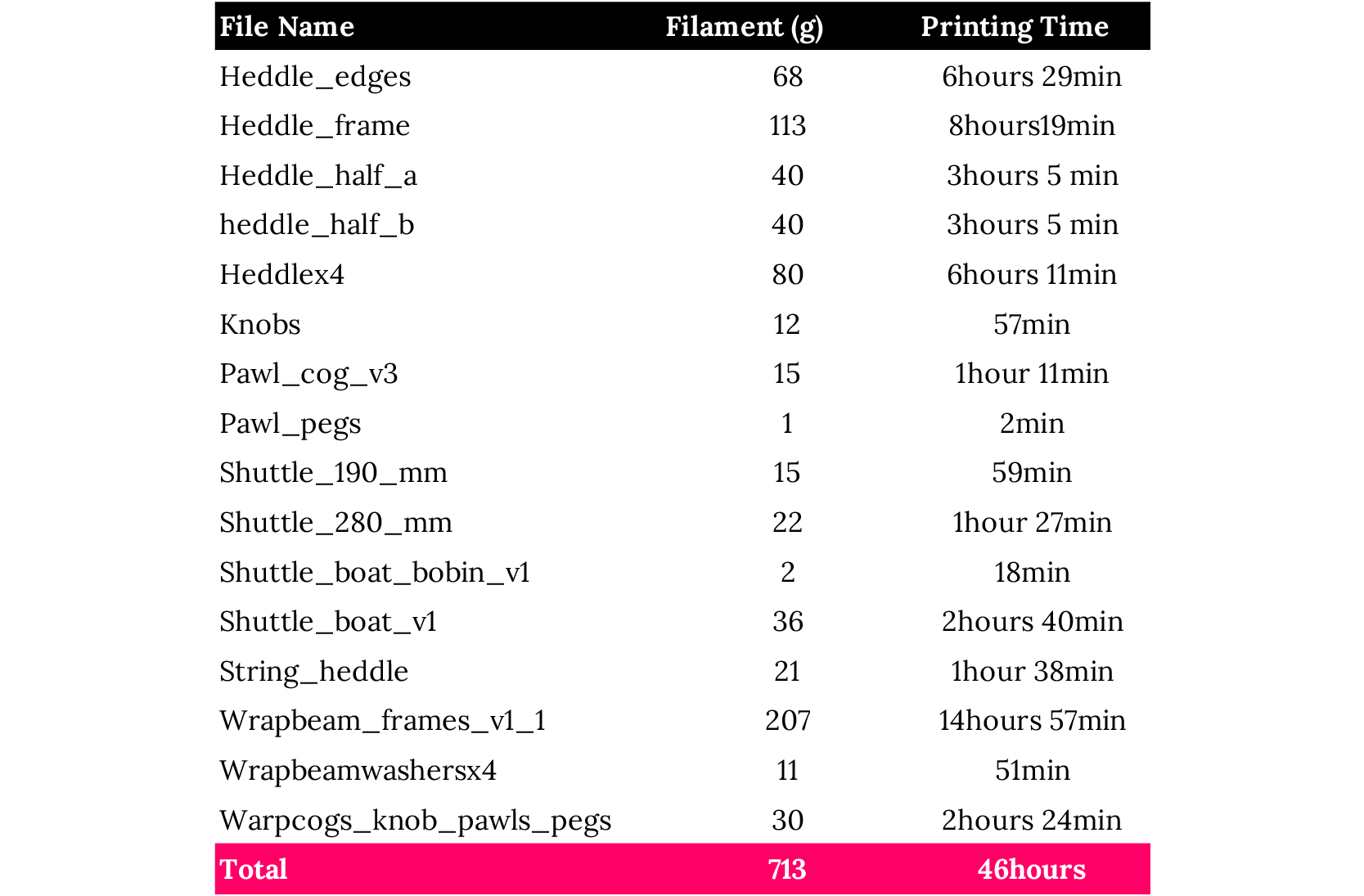
3D printing.¶
We use same printing setting for all pieces, taking as reference the specifications of the designer of the model, but adjusting some settings according to our own experience in 3D printing.





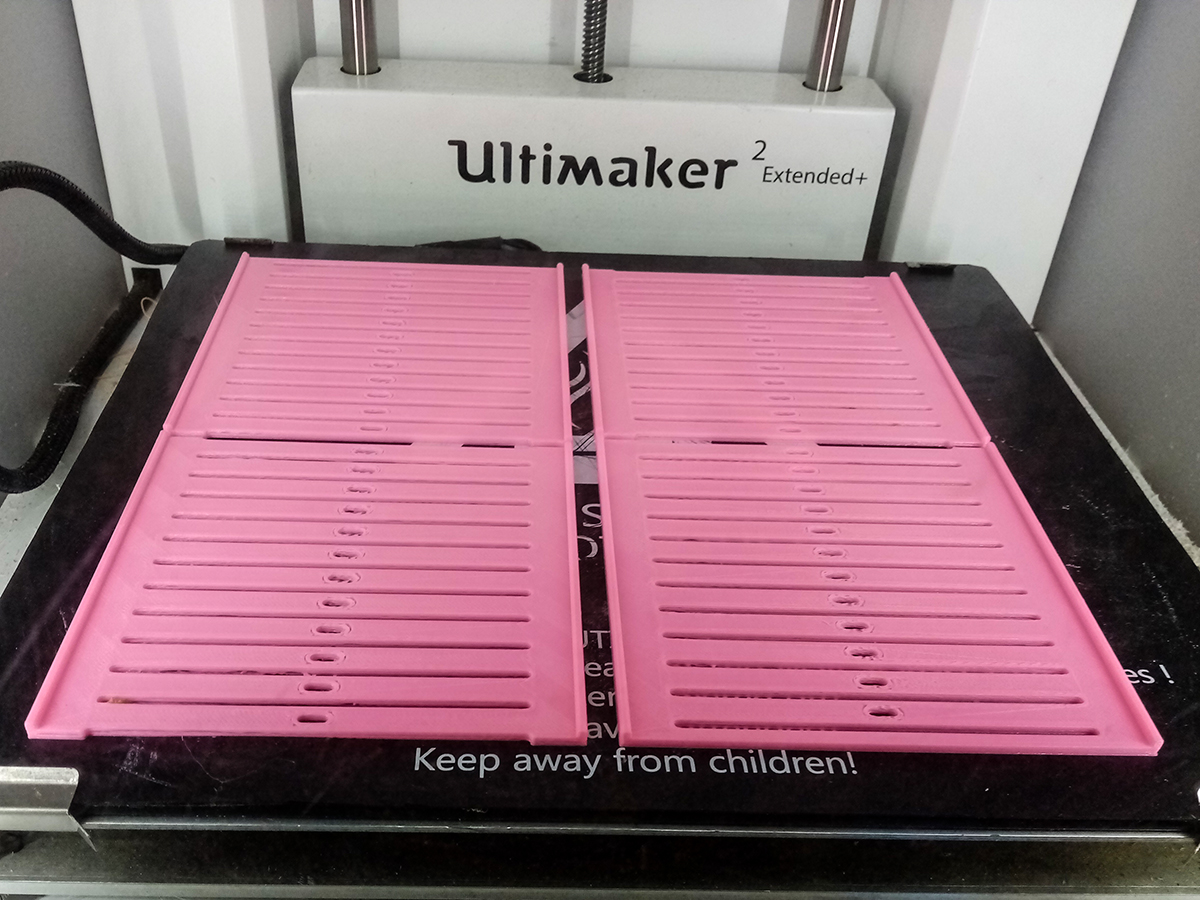
After 3 days of printing using 3 printers at the same time, we finished printing our pieces, with almost no failures!

Assembling.¶
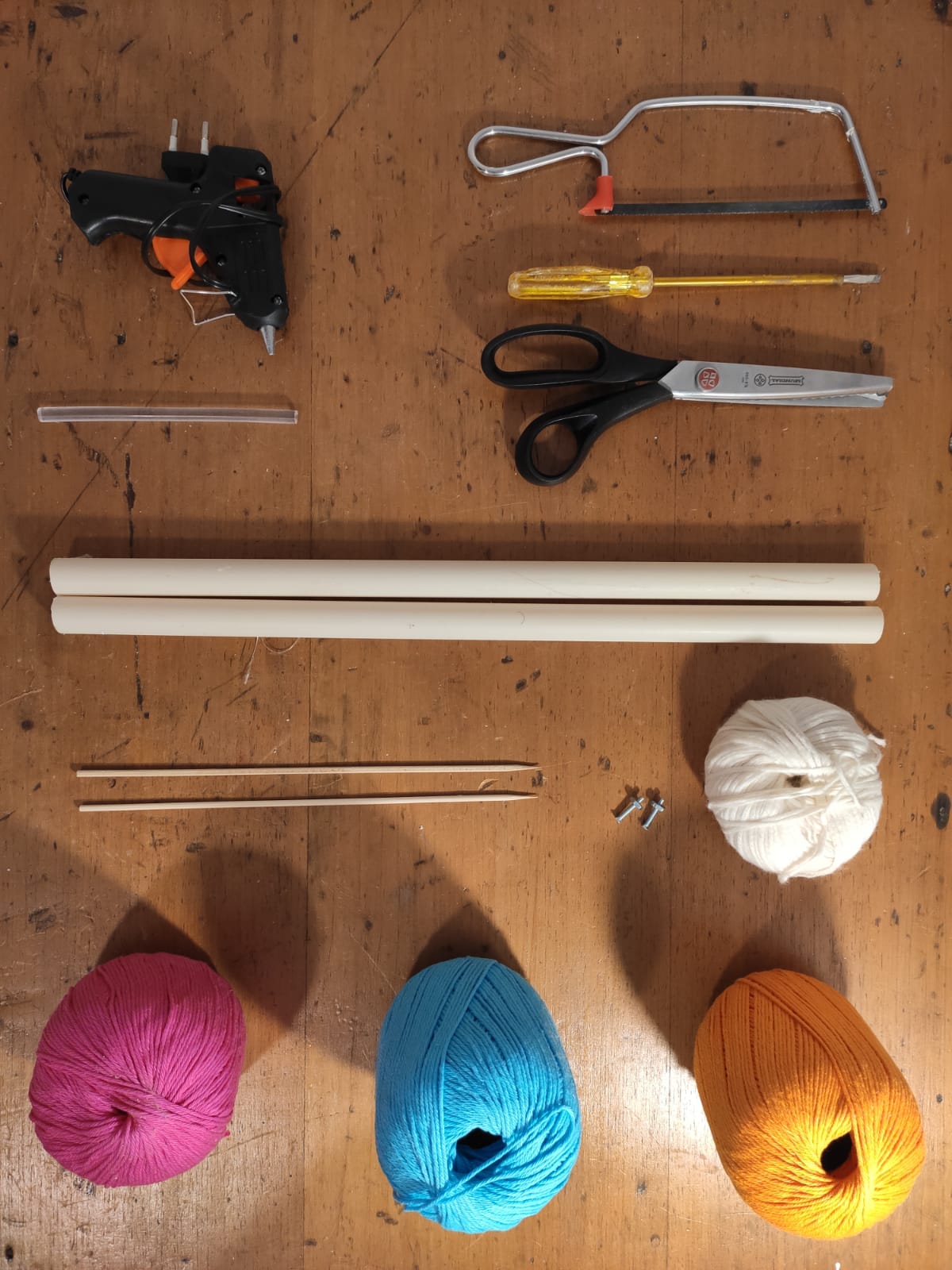
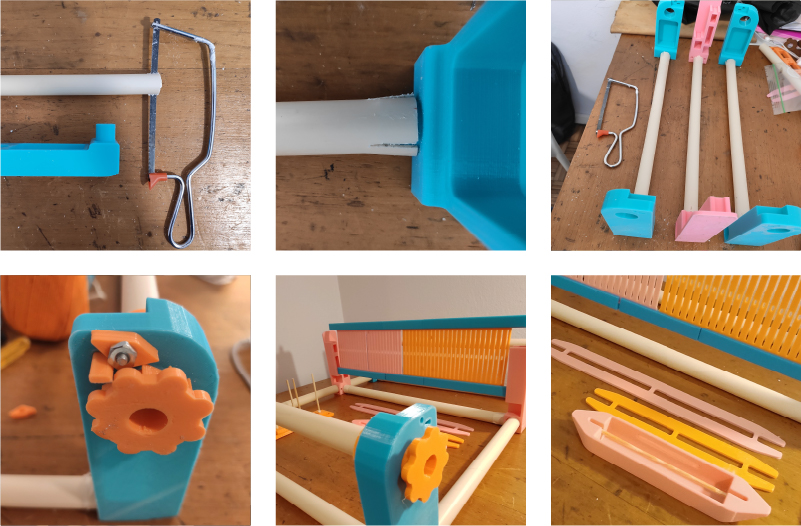
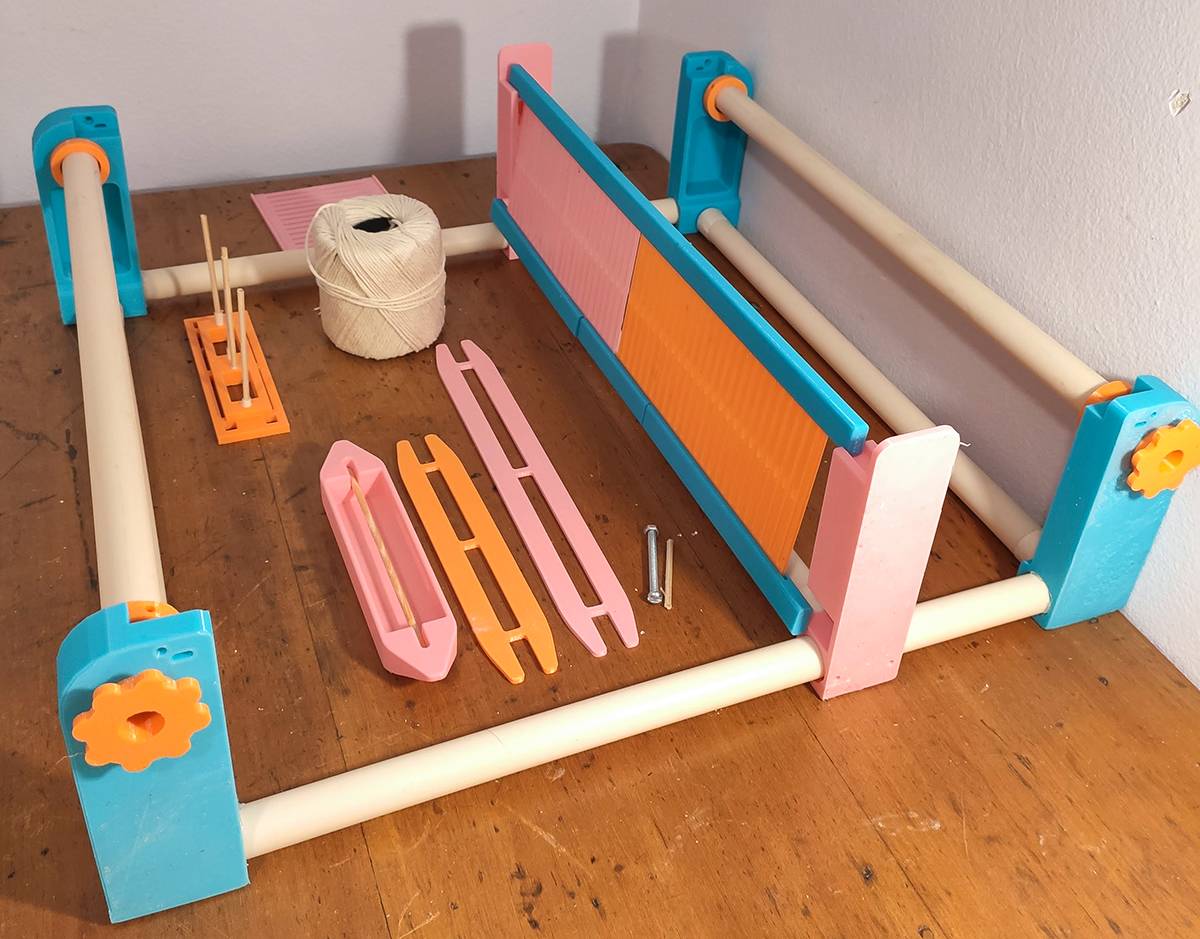
Testing the loom.¶


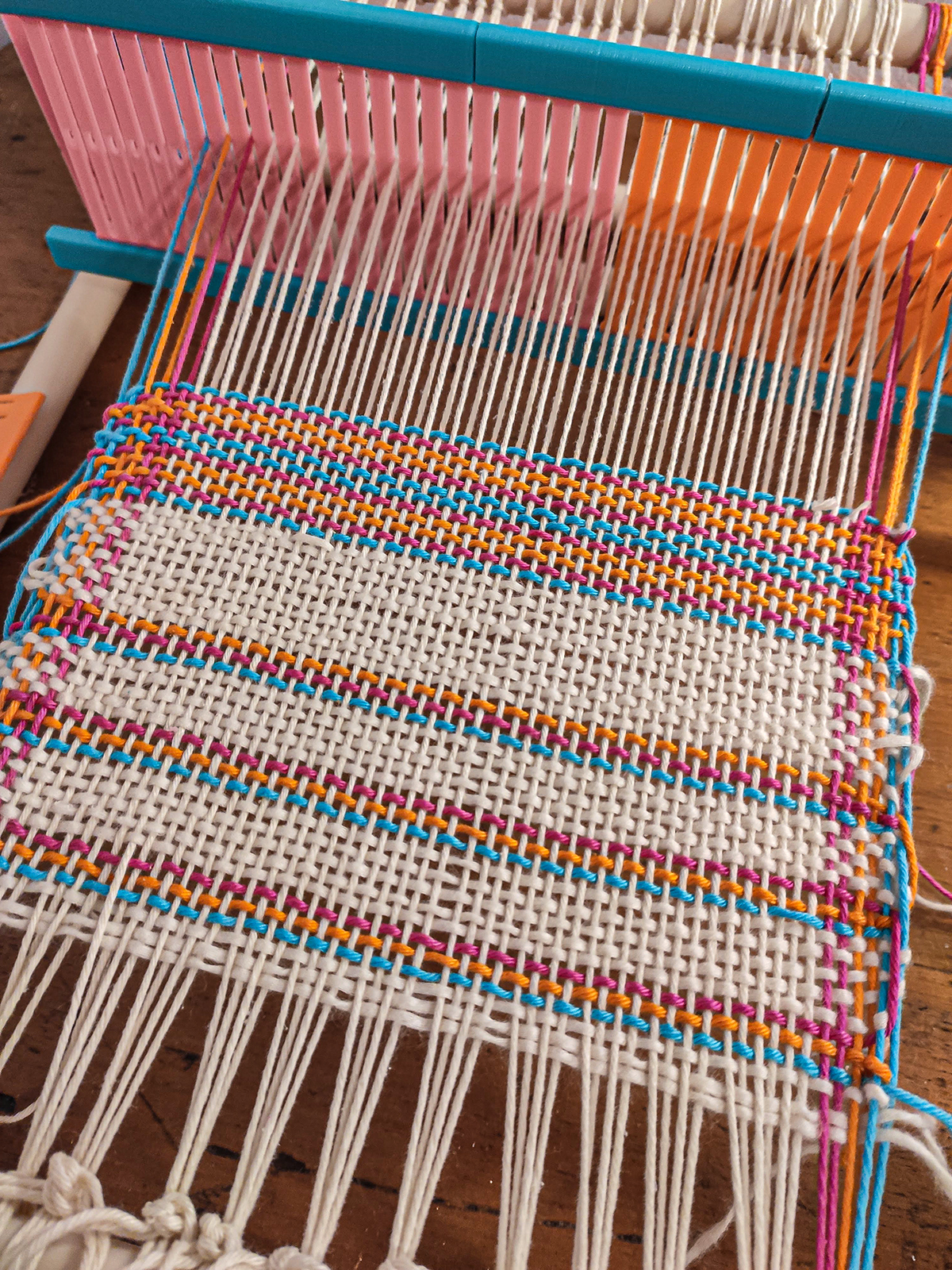
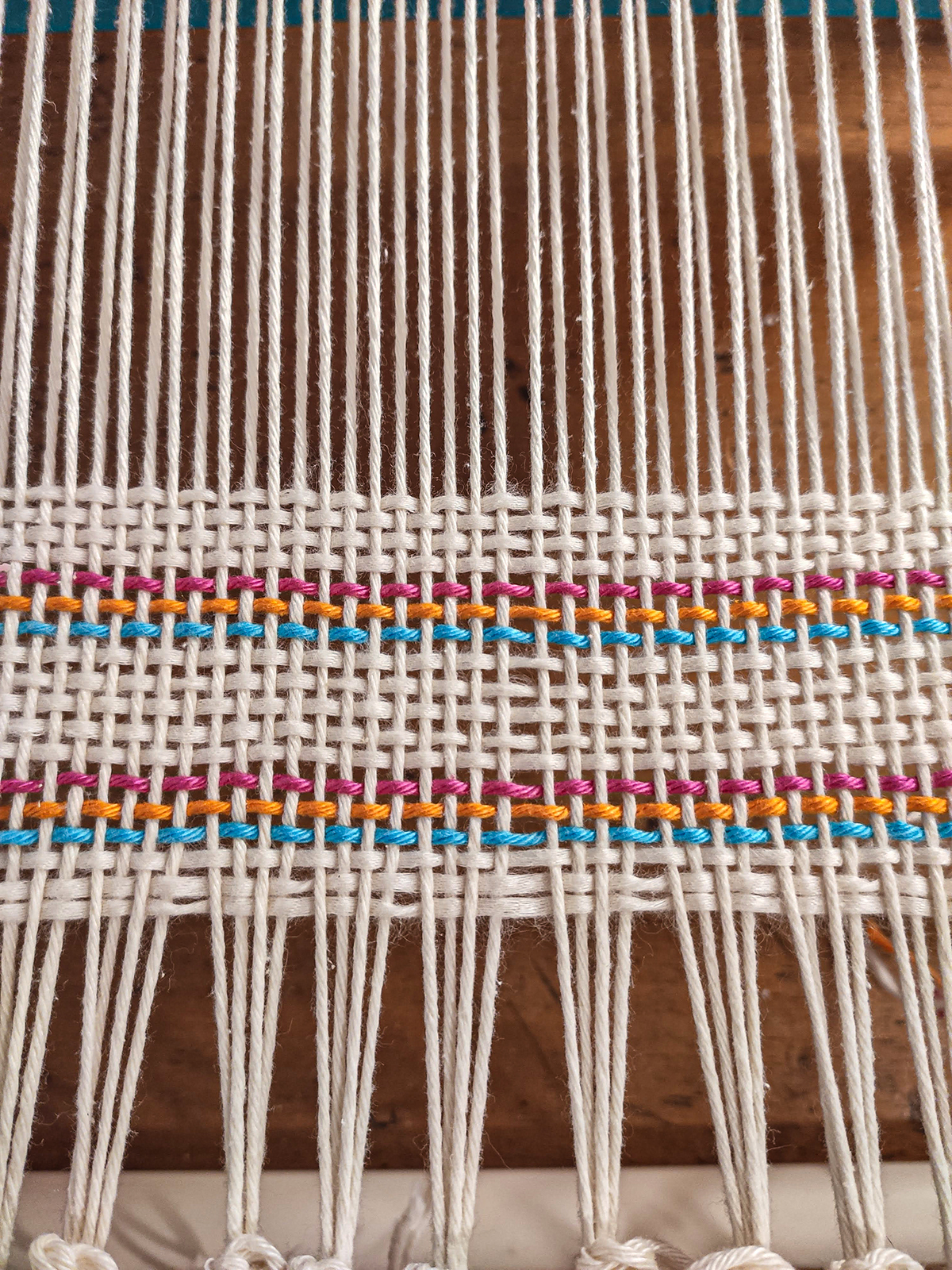
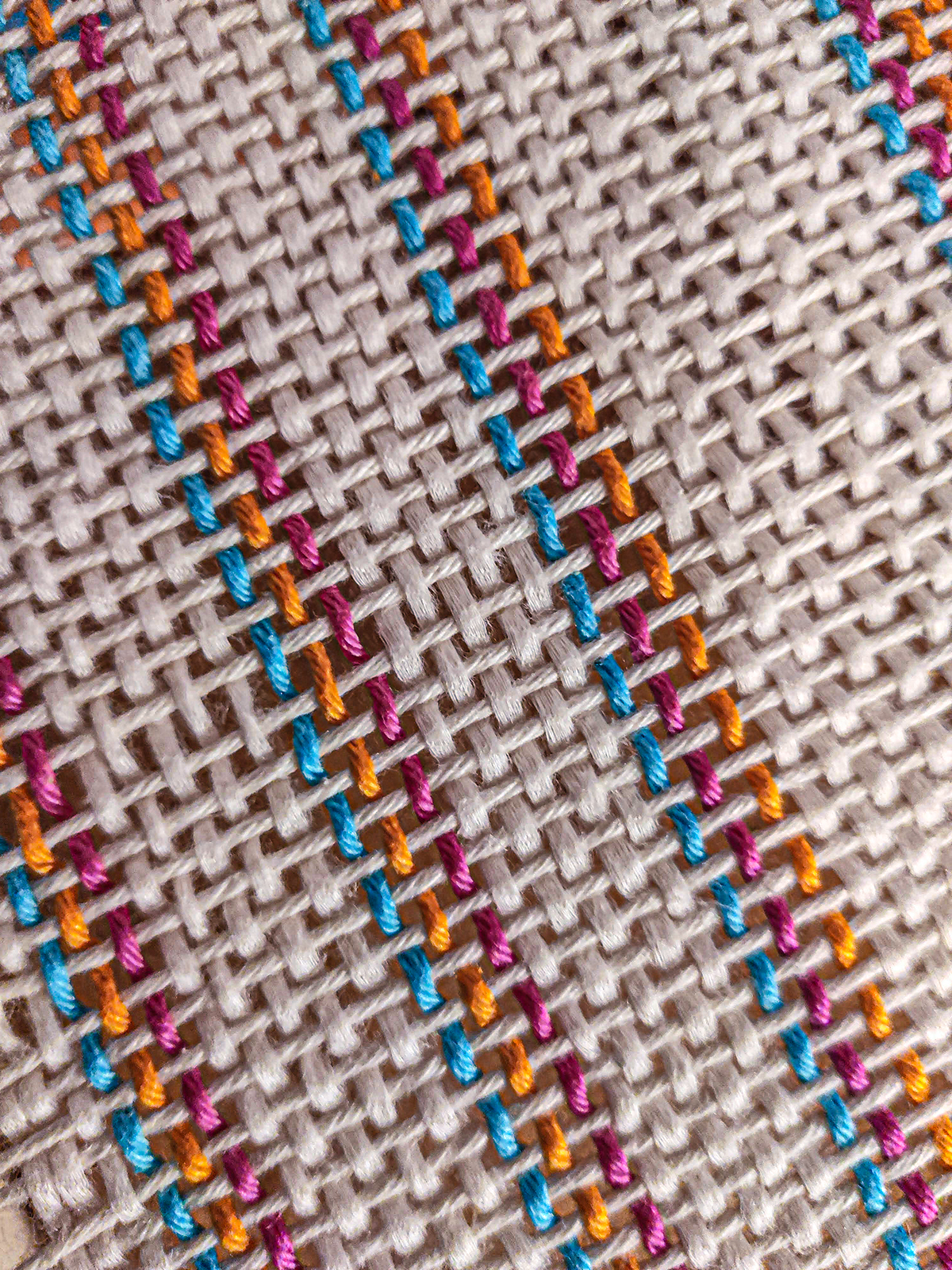
Special thanks to Lucrecia for assuming the responsibility of finishing the assembling of the loom by herself, and weaving the first swatch, as I was required to be in quarantine since last saturday due to a Covid outbreak in Uruguay.
Files¶
Rigid Heddle Loom Files by ProgressTH can be downloaded either in Thingiverse page or here
Improvements and possibilities for future developments¶
After analyzing this model, we concluded that its strength lies in the fact that from a relatively simple design, very good results can be obtained in terms of woven fabric swatches, and that the production time/cost/quantity of material relationship is quite optimal.
Still, we wonder what parts of this loom could be changed, modified or transformed to obtain a more specialized and improved product.
One idea for further development would be the possibility of incorporating more heddles to the loom, in order to achieve more complex designs. This could be achieved by printing more of the same heddle model, or by designing a new piece. In addition, it could also be possible to design and model in 3D a support for the different heddles, which with a system of interlocks and joints could be adapted and incorporated to the original structure.
And if we get into the world of electronics and automation, perhaps we could try to make the model more complex by adding servomotors to the heddles, and programming its operation using a microprocessor board, so that through a software we could introduce the design of the woven fabric that we would like to make, and then the board would be in charge of lifting the different heddles according to that design.
